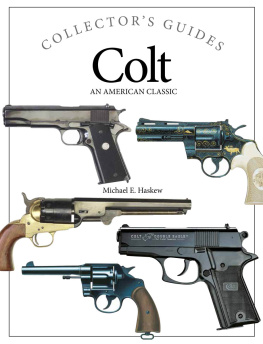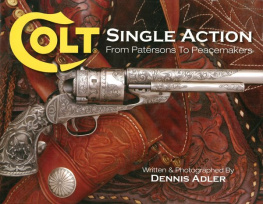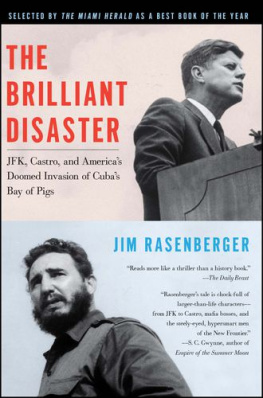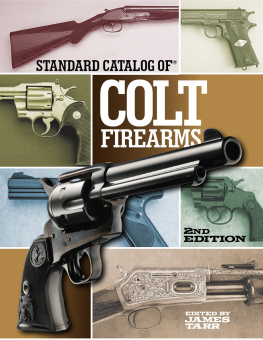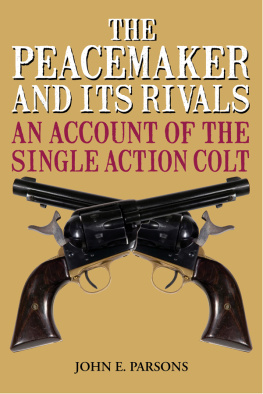
Michael E. Haskew

This digital edition first published in 2015
Published by
Amber Books Ltd
7477 White Lion Street
London N1 9PF
United Kingdom
Website: www.amberbooks.co.uk
Appstore: itunes.com/apps/amberbooksltd
Facebook: www.facebook.com/amberbooks
Twitter: @amberbooks
Copyright 2015 Amber Books Ltd
ISBN: 978-1-78274-304-0
All rights reserved. With the exception of quoting brief passages for the purpose of review no part of this publication may be reproduced without prior written permission from the publisher. The information in this book is true and complete to the best of our knowledge. All recommendations are made without any guarantee on the part of the author or publisher, who also disclaim any liability incurred in connection with the use of this data or specific details.
Picture Credits:
Adams Guns: .

www.amberbooks.co.uk
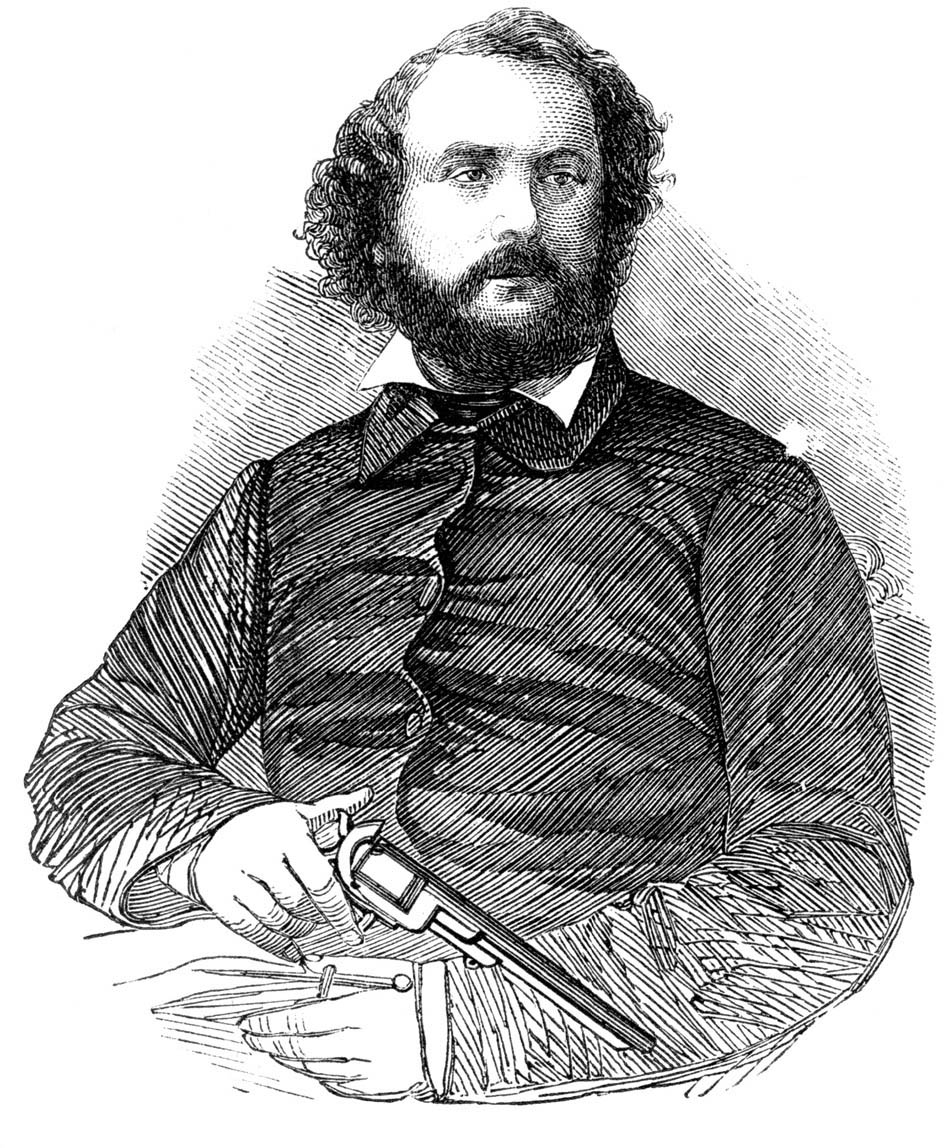
A brilliant inventor and forward thinker, Samuel Colt staked his financial future on the potential for the sales of his firearms. Although he experienced failure on more than one occasion, his company rose to prominence and the name Colt is synonymous with firearms today.
Introduction
Samuel Colt was familiar with failure, but he never grew accustomed to it. Colt was an inventor, a salesman, a showman, a man of vision. He conceived the idea of the revolver, a handgun that could be fired multiple times without reloading, and through tireless perseverance made it a reality.
The year 2015 marks the 180th anniversary of Colts first patent for a firearm with a revolving cylinder and the 160th anniversary of the enterprise originally named Colts Patent Firearms Manufacturing Company. During that time, Colt and the succession of firms that continue to bear his name have produced iconic revolvers and rifles that have done nothing less than shape the course of history. Among these are the first Colt Paterson revolver in 1836, the Colt Single Action Army of 1873, popularly known as the Peacemaker and the Gun that won the West, the Model 1911 pistol, and the M16 assault rifle, emblematic of the American military experience in Vietnam.
Through prosperous times and periods of economic adversity, Colt has enduredand it all began with the inquisitive mind of a young man driven to succeed. Samuel Colt was born in Hartford, Connecticut, on July 19, 1814, the son of Christopher Colt, a farmer who later owned a small textile manufacturing facility, and Sarah Caldwell Colt, who died of tuberculosis when he was only six years old. Three other siblings died young, and the Colt children were cared for by Samuels aunt, Lucretia Colt Price, and later his stepmother, Olivia Sargeant, with whom Christopher Colt fathered three more children.
From his earliest childhood, Sam Colt possessed a natural curiosity. He was said to have taken small machinery apart to peer at the internal workings, while the legend that surrounds his extraordinary life asserts that a book, The Compendium of Knowledge, fired his imagination as he read stories of scientists and inventors whose discoveries and contributions to advancing technology changed the world.
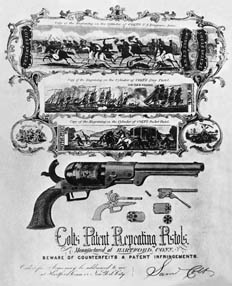
This early advertisement for the Colt Patent Repeating Pistol is lavishly illustrated with period scenes of the revolver in action and a description of the ease with which it could be maintained.
Sam attended school regularly, and at the age of 11 he went to work for a farmer in Glastonbury, Connecticut. He also worked in his fathers textile factory. By the time he was 16, his father had enrolled him at Amherst Academy in Massachusetts, where he learned navigation and tinkered with fireworks and explosives. Apparently, an ill-conceived demonstration of the latter resulted in his expulsion in the summer of 1830.
Although some of the tales of Colts early years may be apocryphal or embellished, they remain entertaining. His maternal grandfather, Major John Caldwell, had served in the Continental Army, and the officers flintlock pistol was passed down to young Sam. Not only was he fascinated by the firearms mechanics, he is reported to have listened to the stories of old soldiers who lamented the fact that they did not possess a gun that could be fired multiple times without reloading.
Late in 1830, Sam signed on as a seaman aboard the brig Corvo, which set sail from Boston for Calcutta, India. The idea of the multi-shot firearm was never far from his mind, and the story goes that the young inventor was inspired to create the revolver by watching the ships wheel spin and noting that it could be locked into a stationary position with a clutch. Another version of the legend says that it was the operation of the ships capstan that spawned the idea, while a third asserts that Colt became familiar with the Collier flintlock revolver after the Corvo docked at Liverpool. While at sea, Colt carved a working model of a pepperbox revolver from scrap wood.
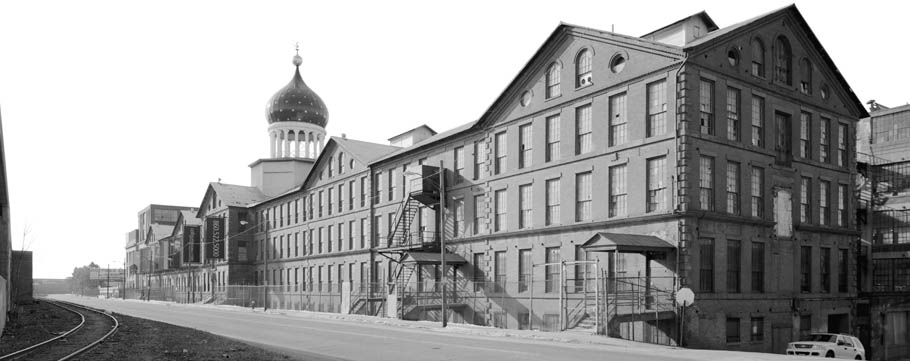
The Colt manufacturing facility in Hartford, Connecticut, was easily recognized by its distinctive onion dome, painted a rich blue with gold stars. The original Colt facility, constructed in 1855, was destroyed by fire in 1864 and rebuilt three years later.
Fledgling Revolver
Christopher Colt was willing to finance the fledgling revolver operation only to the extent that a rifle and a handgun could be produced. Although the handgun was a spectacular failure, blowing up when fired, the rifle was at least satisfactory. However, the financial obstacle required Sam to become inventive in another way. After experimenting with nitrous oxide gas, he styled himself the Celebrated Dr. Coult of New York, London and Calcutta, traveling around North America entertaining audiences with demonstrations of the laughing gas. He also staged elaborate shows about archetypal topics such as redemption, heaven, and hell and became a dynamic public speaker.
In 1835, Colt secured a British patent for his revolver design, and a U.S. patent followed a year later. In 1836, he opened the Patent Fire Arms Manufacturing Company in Paterson, New Jersey, amid the manufacturing boom of the burgeoning Industrial Revolution in New England. Colt was only 22 years old, and an uncle assisted in the formation of the enterprise. After six years of operation and the production of more than 2,300 revolving handguns, nearly 1,500 revolving rifles and carbines, and approximately 460 revolving shotguns the company became insolvent, closing its doors in 1842.
After the Paterson setback, Sam Colt turned his attention to U.S. government contracts for waterproof ammunition cartridges fashioned of thin tin foil rather than paper. He also tried to interest the government in underwater mines for harbor defense and worked with Samuel F.B. Morse, inventor of the telegraph. Colt devised a waterproof cable of copper coated with tar that allowed Morse to place telegraph lines beneath bodies of water.

